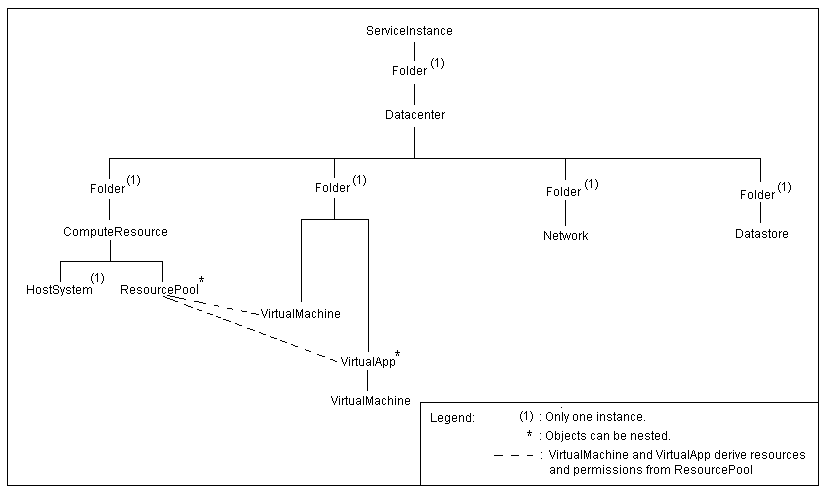When you start a session, vSphere creates a ServiceInstance with one root folder, one Datacenter, and four folders that hold the different types of inventory objects.
When you access a vCenter Server System, the hierarchy shown in vCenter Server Inventory Hierarchy allows you to traverse the inventory.
|
Caution If your ESX/ESXi hosts are managed by a vCenter Server, you must always access your hosts through the vCenter server. The vCenter server keeps track of all synchronous and asynchronous operations, and will have the latest status and inventory information about each ESX/ESXi host. Therefore, connecting directly to a host that is managed by a vCenter Server may give you incorrect or incomplete data.
|
If your installation includes a vCenter Server system, you can create additional datacenters under the root folder. For everyDatacenter object, the server automatically creates the following Folder objects:
|
■
|
|
■
|
A folder for a ComputeResource hierarchy.
|
|
■
|
|
■
|
A folder for Datastore objects.
|
In a large deployment, the nested structure allows you to organize the objects in the datacenter into an easily manageable structure by using multiple folders and datacenters.
For a standalone ESX/ESXi system, only a single datacenter is supported, and the Folder managed entity does not support creating additional Folder objects or Datacenter objects.
When you access an ESXi host directly, rather than accessing the host through a vCenter Server system, the hierarchy shown in ESXi Inventory Hierarchy allows you to traverse the inventory.

